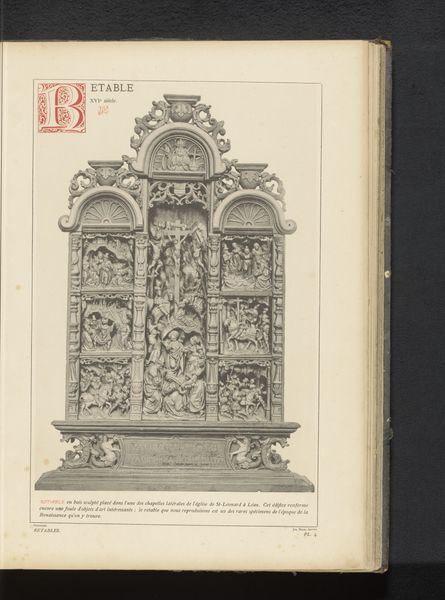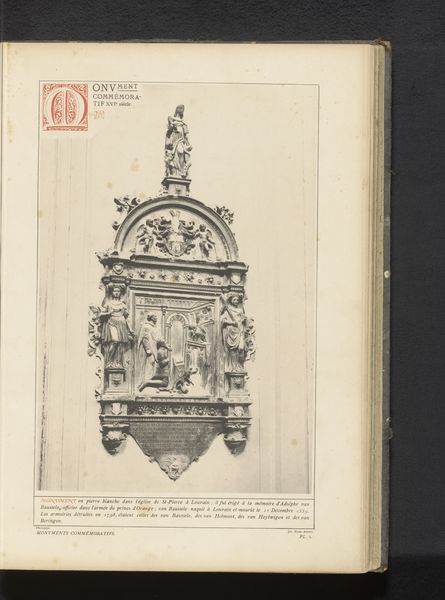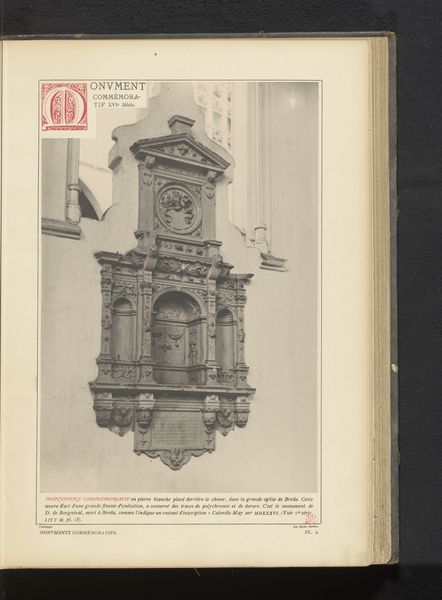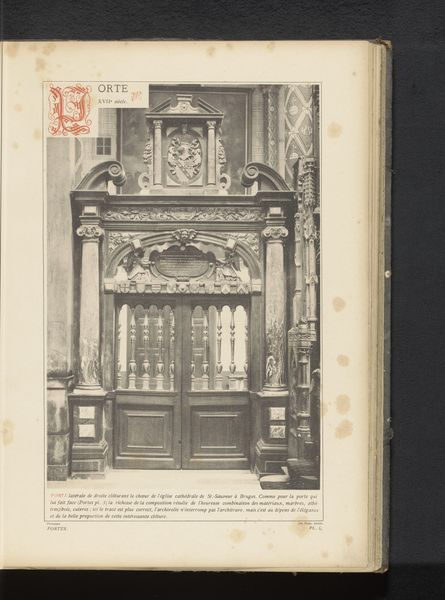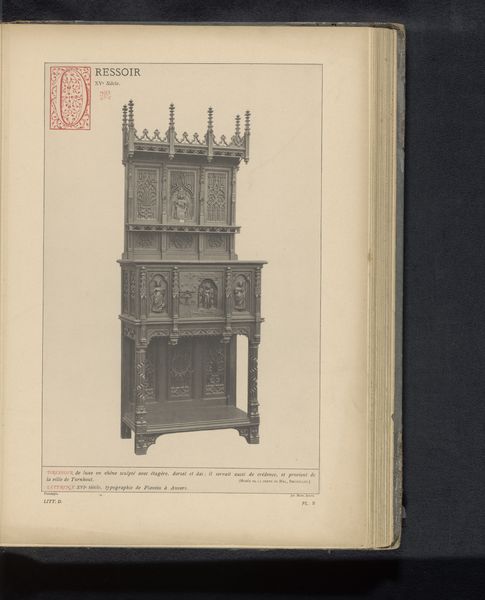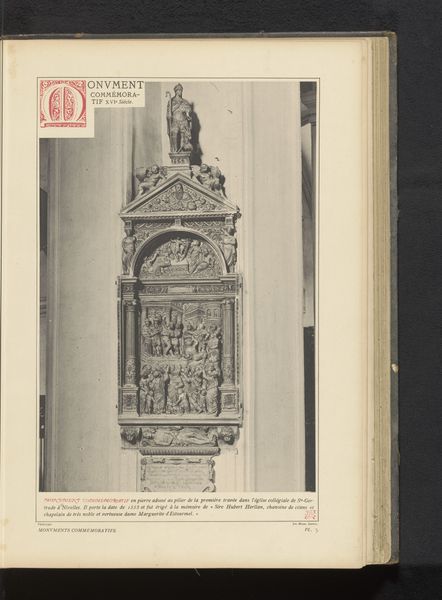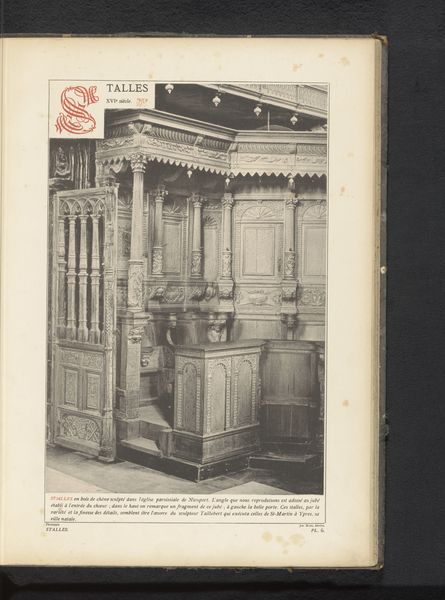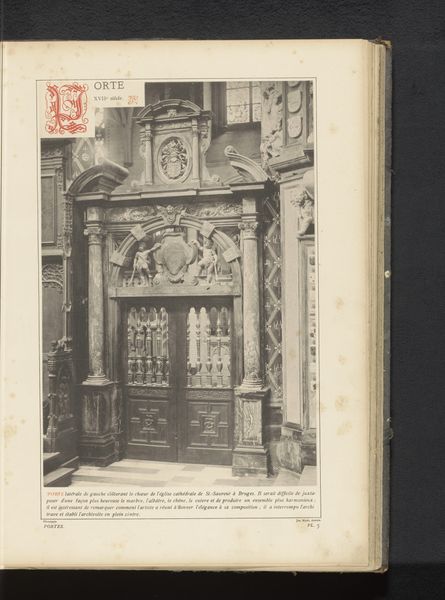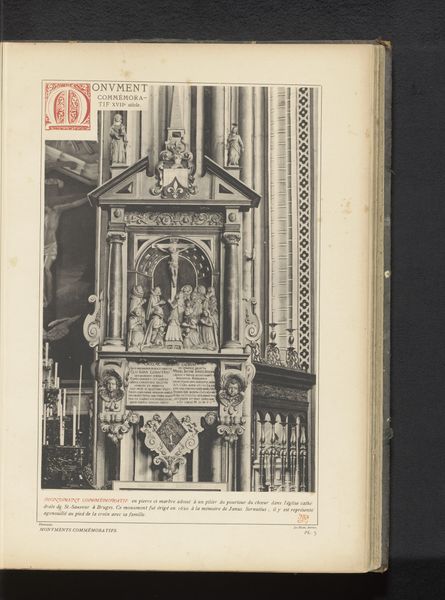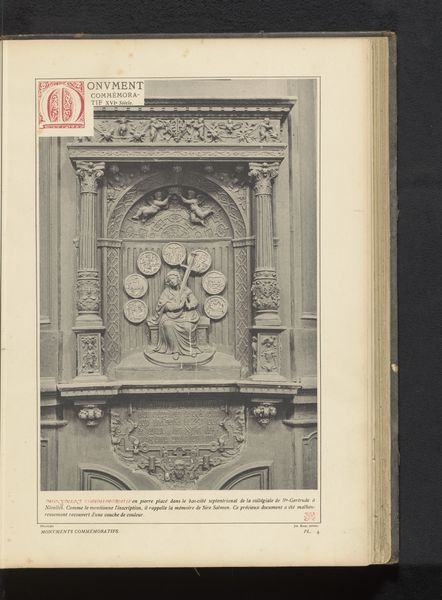
Gedenkteken van eikenhout in de Onze-Lieve-Vrouwekerk in Brugge, België before 1887
0:00
0:00
drawing, carving, print, relief, wood, architecture
#
drawing
#
medieval
#
carving
# print
#
relief
#
wood
#
history-painting
#
miniature
#
architecture
Dimensions: height 337 mm, width 230 mm
Copyright: Rijks Museum: Open Domain
Editor: So, this is a reproduction of a pre-1887 wooden monument from the Church of Our Lady in Bruges, Belgium. It’s referred to as a Gedenkteken van eikenhout. It looks like a miniature shrine or altarpiece, complete with heraldry. It has such an imposing presence for such a small rendering. How should we interpret this commemorative piece? Curator: Well, first, consider what commemoration *means*. This wasn't just about remembering; it was about solidifying power. Heraldry was the visual language of lineage and status, especially in a merchant city like Bruges. Its elite were eager to demonstrate power, so to that end how do we see gender represented here? What are the societal messages promoted by religion in relation to social power? Editor: I hadn’t thought about the merchant connection to the monument. And gender is difficult to ascertain simply from a drawing of the object, but certainly important when analyzing medieval history. Curator: Exactly. These commemorative monuments, often commissioned by wealthy families or guilds, were strategically placed within sacred spaces. The imagery and inscriptions, of which there are clearly several examples, subtly reinforced specific narratives. Who gets remembered, how, and *why* are crucial questions. What about the visual rhetoric employed here? What do you make of the carving? Editor: The carving does look impressive. But I suppose all of this served as propaganda of sorts? It’s a biased preservation of history, designed to ensure their legacy. Curator: Precisely. Understanding the historical context and social dynamics allows us to deconstruct these narratives, to question the power structures they upheld. It goes beyond simply appreciating the craftsmanship. What stories might be missing, or intentionally erased, in this commemorative piece? Editor: This makes me consider the layers of meaning and manipulation inherent in memorializing figures. I’m really prompted to think more about the role of monuments in promoting very specific and even politically charged views. Curator: I'm so glad, that is precisely what makes art a timeless social instrument.
Comments
No comments
Be the first to comment and join the conversation on the ultimate creative platform.

